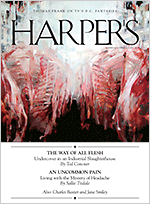 SOUNDTRACK: LAURA VEIRS-“Sun Song” (2013).
SOUNDTRACK: LAURA VEIRS-“Sun Song” (2013).
 I know of Laura Veirs from her work with The Decemberists, but as she’s mostly a backup singer (and occasional lead), I couldn’t really say I knew her very well. So I was delighted to hear this song that she had written and to see just how great it is,.
I know of Laura Veirs from her work with The Decemberists, but as she’s mostly a backup singer (and occasional lead), I couldn’t really say I knew her very well. So I was delighted to hear this song that she had written and to see just how great it is,.
The song begins with a simple folk guitar and pizzicato pluckings. Veirs’ voice has an innocence that I really love—gentle but clean. The chorus brings an unexpected harmony vocals and vibrato but nothing prepares you for the feedback squalls that the new electric guitars bring in.
The song doesn’t get faster, just a little noisier—it reminds me of the best Sarah Harmer tracks. Then the electric guitar goes away and the song feels fuller somehow. The end of the song introduces a kind of call and response which adds a cool new element until it all relaxes back into its original mellow style.
I really like this song and need to hear more from Veirs. And I see that she has released a whole bunch of albums, so there’s a lot to choose from.
[READ: May 30, 2013] “Loyalty”
This story begins with a pretty straightforward sentiment: “As much as I love her, I blame Astrid. Astrid told my wife, Corinne, that she could achieve happiness if only she’d leave me.” Indeed, Astrid made a regular suggestion out of it–leave him, be free. And so finally Corinne did–she left him alone with their son, Jeremy. Initially Jeremy wrote to Corinne but eventually the replies were fewer and further between and he gave up.
Wes was crushed, but soon after he fell in love with Astrid and they got married. I love the way it is presented:
The minute Corinne was gone, Astrid showed up. I don’t recall that, prior to that day, we had so much as exchanged a moody, sparking glance. She took me into her expert arms. It was consolation and sympathy at first, I guess. I didn’t question it. In about the time it takes to change the painted background in a photographer’s studio from a woodland scene to a brick wall, she had left her boyfriend and was presenting me with casseroles and opened bottles of cold beer.
We never really learn if Astrid had planned this all along. It seems like it, but it’s not like Wes is a huge catch. Corinne’s divorce request went though with no trouble or custody problems. And soon he and Astrid had a new child, a daughter, Lucy. Then they saw Corinne on TV, on a show about runaway moms–Wes asks, what would make her do such a thing–and no reasonable answer is given. (more…)














